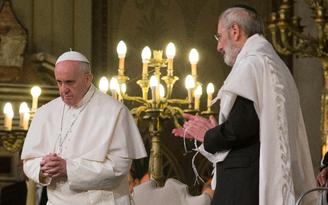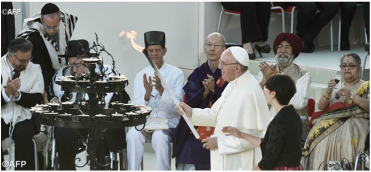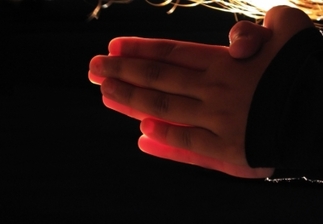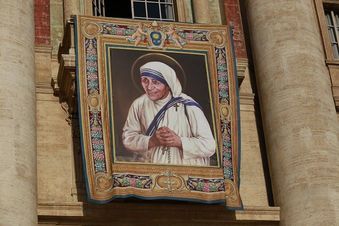
In the Christian Bible, the Gospels tell the story of Jesus but they are not historical accounts. Rather they are the expression of the faith of the community that wrote them and reflect the particular historical situation of the time in which they were written. They want to show Jesus as unique, with a unique message and different from the religious attitudes of the time. It’s easy to forget that all the characters in the stories are Jews and to identify the ‘goodies’ in the story with Christians, who are the followers of Jesus, and the ‘baddies’ with Jews who rejected him and live from a legalistic position rather than a position of love of God and neighbour. This was a common view of the difference between Christianity and Judaism. I have often heard people say that Judaism is a religion of law while Christianity is a religion of love, that the God of the Old Testament is a God of vengeance while the God of Jesus is a God of love. And yet some of the most beautiful passages in the bible about the love of God come from the Hebrew prophets.
Two authors who have looked at this spring to mind – Geza Vermes who many years ago wrote a book called Jesus the Jew. I was at university at the time and remember the flurry this caused – excitement for some, consternation for others. More recently Amy-Jill Levine, a Jewish New Testament scholar has written a book called ‘The Misunderstood Jew: The Church and the Scandal of the Jewish Jesus’ in which she shows how much of what Christians take to be a challenge to 1st cy. Judaism in the Gospels is in fact a reflection of it. Jesus’ actions and stories reflect his own tradition. His prayer and attitude to God and the Law were not as idiosyncratic and challenging to his faith as the Christian scriptures and their interpreters would suggest. Jesus was a faithful Jew, probably more associated with the Pharisees than any other sect of the time. He was a teacher who knew how to challenge his listeners to get to the heart of their faith and live it faithfully. What appears to be conflict between Jesus and the Jews of the time is more likely to reflect the growing tensions between Church and Synagogue and the slant put on the text by the evangelist who wrote it in the light of these developments. As an academic NT scripture scholar Amy-Jill Levine is able to quote many scripture commentaries that show Judaism in a negative light. It’s the kind of teaching that wants to uphold and extol the uniqueness of Jesus and make him different from the context in which he lived - the kind of teaching that we Christians have imbibed since childhood and which seeps into our subconscious. It’s the kind of teaching that Jules Isaac classified as leading to contempt for the Jews.
Thank goodness it’s the kind of teaching that’s now recognised by the Catholic Church and many other Christians as inaccurate and wrong. It’s the reason why the Vatican has issued guidelines on how to present Jews and Judaism in teaching and preaching – but it’s not always done as well as it could be. Christians need to become sensitive to the ways in which Judaism is portrayed or could be interpreted in the scriptures – how does this sound to Jewish ears? It’s a good practice when reading our scriptures, as it for all believers when they read their own scriptures. For example a passage such as that in the letter to the Galatians which states that in Christ there is neither male nor female, Jew nor Greek, slave nor freeman, might sound inclusive in a Church context but exclusive in an interfaith context where it could be heard as suggesting that Judaism does not deserve to exist. The first time I heard an objection to this passage being used in an interfaith context I was puzzled, thinking of it in inclusive terms but of course it sounds quite different to Jewish ears – better to have both Jew and Greek perhaps, rather than neither.
There is a growing understanding of the Jewishness of Jesus within the Christian community and a growing appreciation of him within the Jewish community as evidenced by a recent statement from a group of Orthodox Rabbis. Amy- Jill Levine goes so far as to say that Jesus can be a bridge that unites the two religions rather than the wedge that has separated them. She thinks that Jews should see Jesus as a famous Jew and be proud of him and that Christians need to recognise his Jewishness if they are to truly know him. This is amazing stuff given the history of conflict between the two faiths. It offers an agenda for reconciliation and a discovery of the common roots from which both religions have sprung.
‘ Let those who have ears to hear………..





 RSS Feed
RSS Feed
